Abstract
Vegetable production in Greece is an important industry with high demand for tomatoes and cucumbers among other products. According to the latest data, cucumber production in 2022 is expected to reach 142kt, making it the largest yielding vegetable production in Greece as a whole. Cucumbers grow well in warm climates and are grown in a wide range of locations. In terms of land use, while cucumbers occupy a large area, tomatoes also occupy an important position. Tomatoes are mainly divided into those for the fresh market and those for processing, with the production of processed tomatoes supporting domestic and international demand. Trends over the past few years have seen the need for efficient use of water resources due to global warming, which has led to advances in production technology. Furthermore, Greek vegetable production is mainly for export, with tomatoes and cucumbers in particular enjoying high demand on the European market. In terms of land use, vegetable cultivation is increasing in warmer regions, and efficient management of cultivated land area is progressing. Against this backdrop, vegetable production continues to be an important agricultural sector in Greece.
Production (by vegetables)
Greek vegetable production has shown large fluctuations between 1961 and 2022, with particularly notable changes seen in cabbage production. Cabbage production volume peaked at 200kt in 1993 and has been declining ever since, with current production volume remaining at only 24.8% of the peak. This decrease is likely due to fluctuations in market demand for cabbage and a shift in demand to other vegetables. From the 1960s to the early 1990s, Greek agriculture grew rapidly and many vegetables were produced, with cabbage, tomatoes and cucumbers being particularly important crops. However, in recent years, the amount of cabbage produced has decreased, while the area cultivated with more productive crops such as tomatoes and cucumbers has expanded. In addition, crop cultivation methods are changing due to more efficient land use and climate change. In particular, with global warming progressing, crops that are adapted to warm climates, such as tomatoes and cucumbers, are attracting attention. Although Greek vegetable production overall remains diverse and continues to play an important role for export to European markets in addition to domestic consumption, the decline in cabbage production reflects a changing agricultural structure.
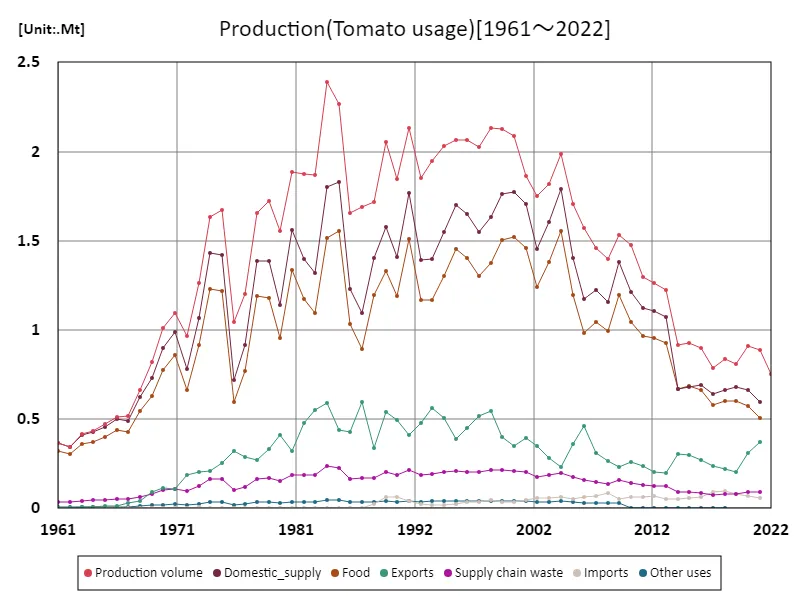

The maximum is 2.39Mt[1984] of Production volume, and the current value is about 31.5%
Yield(by vegetable)
In Greece’s vegetable production, cucumber recorded the highest yield of 80.1t/ha in 2020 and has maintained stable productivity since then. With a peak yield of 87.7% secured for 2022, it remains an important crop. This trend can be attributed to Greece’s mild climate and more efficient use of water resources. Cucumbers are highly productive compared to other vegetables and are particularly suited to cultivation in warm climates. Over the past few decades, cucumber has consistently maintained high yields, establishing it as a major crop in Greek agriculture. The increase in cucumber production is due to advances in agricultural techniques and the introduction of efficient irrigation techniques. Cucumbers are also in demand both in the fresh market and in processing industries, with production, especially for export, increasing. Furthermore, in recent years Greek agriculture has adopted sustainable agricultural techniques and environmentally friendly cultivation methods, which have improved crop productivity. Cucumber production volumes reflect these changes and the crop continues to be highly profitable.
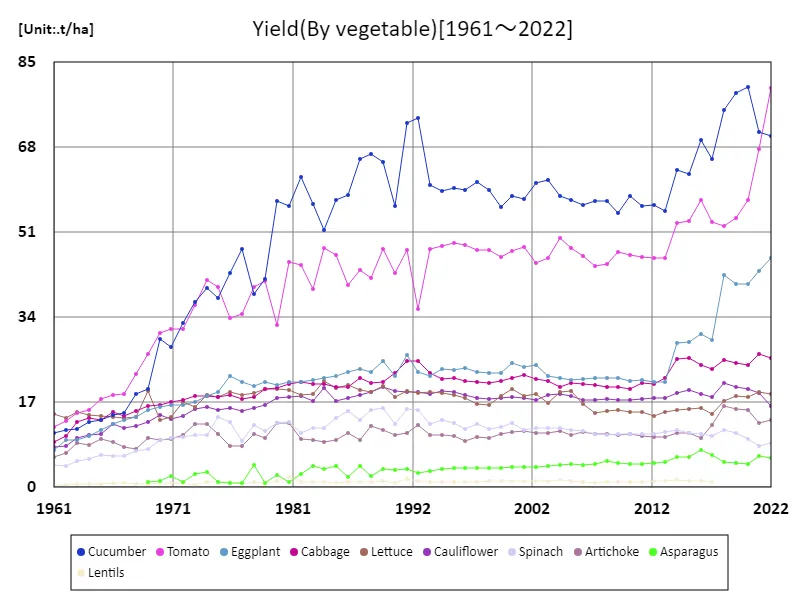

The maximum is 80.1t/ha[2020] of Cucumber, and the current value is about 87.7%
Land use (by vegetables)
Vegetable land use data for Greece for 2022 shows that tomatoes are cultivated on the largest area, reaching 9.43 kha. This reflects the fact that tomatoes are a major crop in Greece and are in high demand in the fresh market and in the processing industry. Tomato land use, particularly in temperate climates, is well suited to production and plays an important role in Greek agriculture. The average land use area is 3.35kha, which indicates that it is cultivated in a relatively small area compared to other vegetables. The total land use is 30.2kha, which gives an idea of the scale of vegetable cultivation throughout Greece. In addition to tomatoes, crops suitable for warm regions, such as cucumbers and peppers, are also grown, but there are few crops that are grown on a scale second only to tomatoes. As a trend so far, Greek agriculture has been characterized by efficient allocation of land use area for each crop, and in areas where tomato production is concentrated, cultivation techniques and irrigation systems have evolved to maintain high productivity. Additionally, with global warming, agricultural production areas are expanding and crop cultivation methods and land use are becoming more efficient, which is an anticipated future trend.
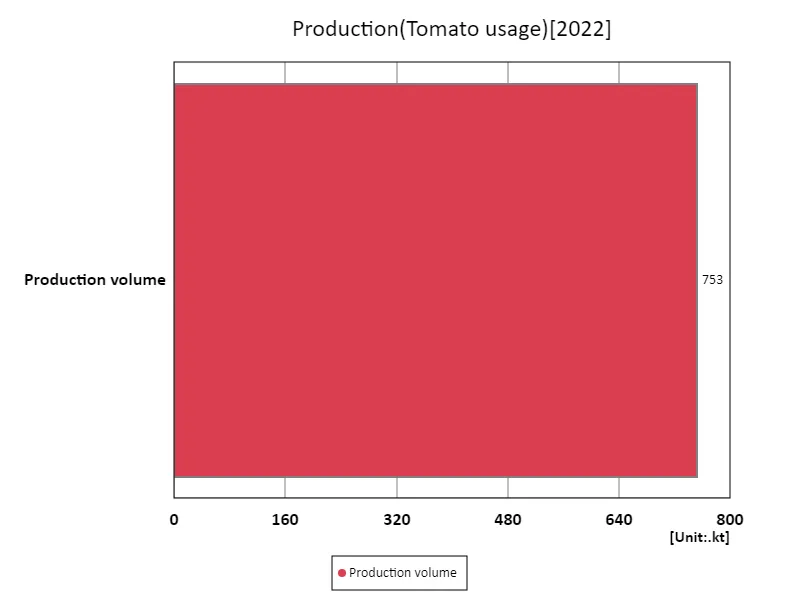

The maximum is 753kt of Production volume, the average is 753kt, and the total is 753kt
Tomato usage
Tomato production in Greece reached a peak of 2.39 Mt in 1961 and has remained stable ever since. The maximum production volume during this period indicates the importance of tomatoes in Greek agriculture, and in particular the fact that a production system was established to meet demand, with production for the fresh market and for processing. Current production levels remain high, and tomatoes remain a major vegetable in Greece. In terms of use, demand for tomatoes is largely comprised of those for the fresh market and those for processing, with demand for processed tomatoes in particular increasing both domestically and overseas. Processing tomatoes are used to make a variety of products, such as tomato sauce and canned goods, and are actively exported, mainly to Europe. This trend reflects the commercialization of Greek agriculture and the diversification of uses for the tomato, driven by a growing export market. In recent years, advances have been made in cultivation techniques that are suited to climate change and irrigation systems have become more efficient, resulting in higher productivity. As a result, tomato production by use has stabilized, and tomatoes are expected to continue to play an important role in the Greek agricultural economy.
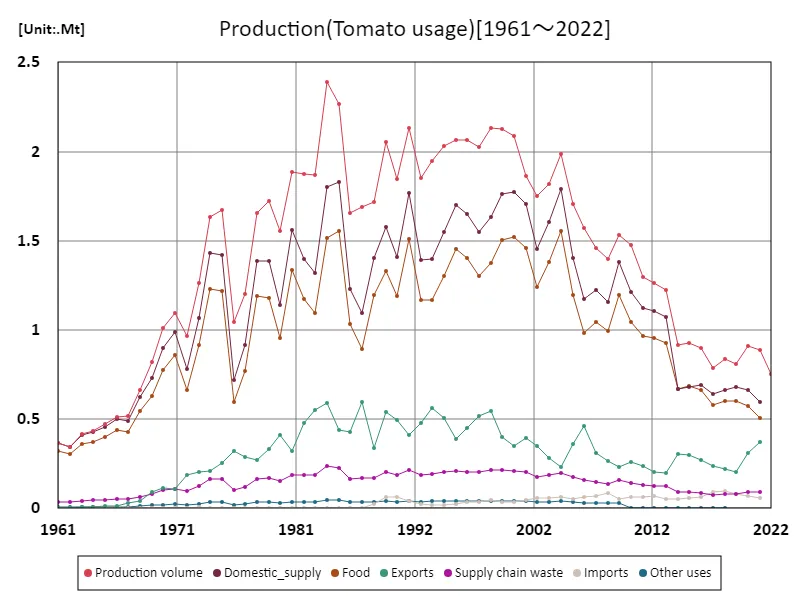

The maximum is 2.39Mt[1984] of Production volume, and the current value is about 31.5%
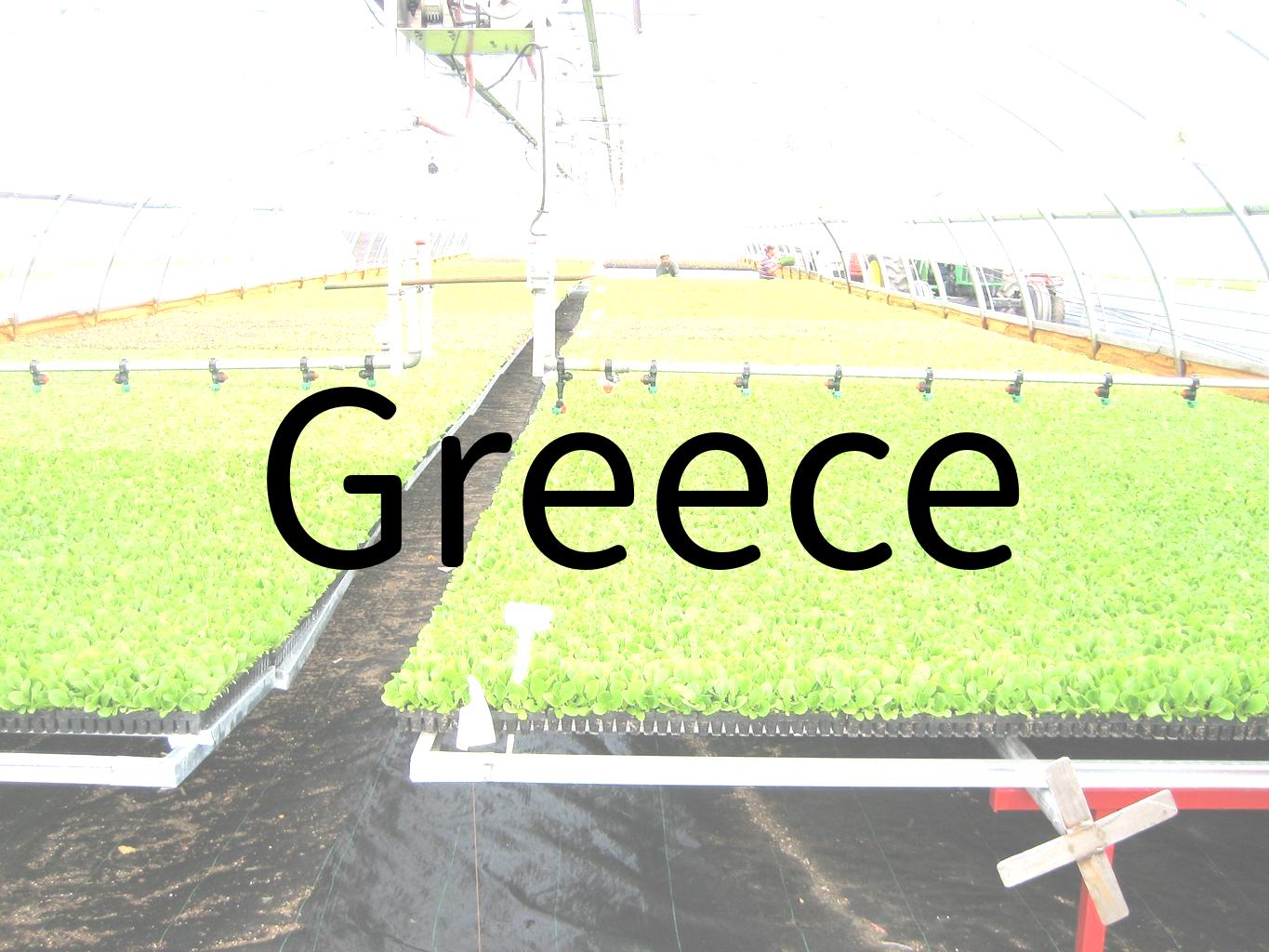


Comments